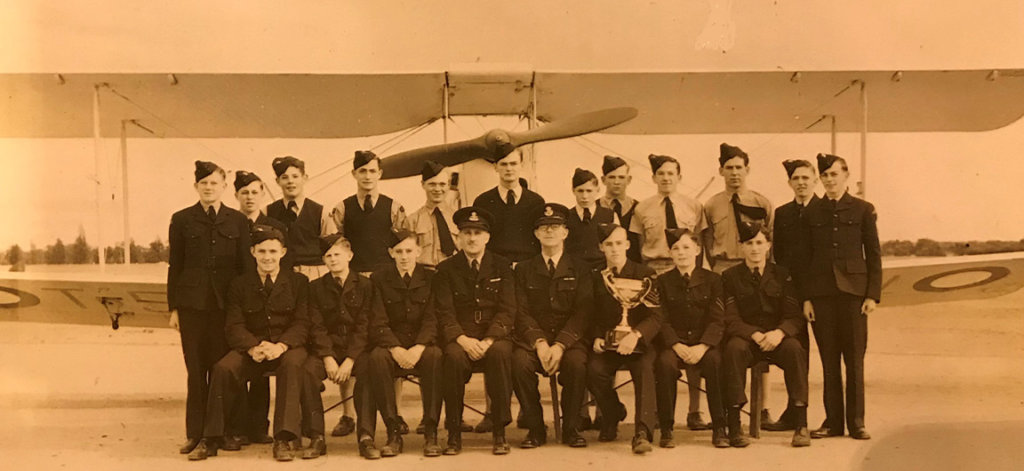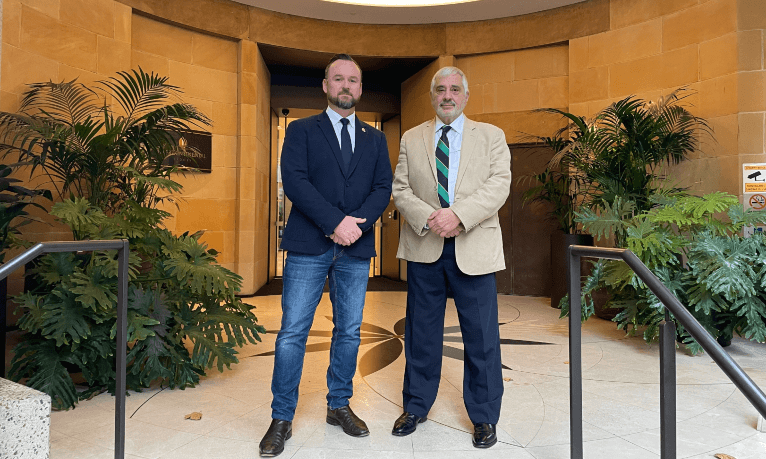History in Flight

Story by Steve Meacham. Illustration by Saydan Aksit. This article was originally published in the June 2020 issue of Reveille. It has been adapted for publication here.
On Remembrance Day 2018 – the centenary of the Armistice which ended World War I – the population of a small town of just 4,000 people in the north-east Riverina, NSW, gathered to watch a spectacular commemorative flypast: Poppies over Temora.
Two vintage planes from the world-renowned Temora Aviation Museum took off from what was Australia’s largest RAAF pilot training centre during World War II for a low-level flight over the Temora War Memorial as the ‘Last Post’ played.
6,200 Silk Poppies
“We used the only flying Hudson bomber left in the world to drop 6,200 silk poppies over the cenotaph,” says former Flight Sergeant Bob Costello. “That was one poppy for every 10 Australians killed in the war.
“Our Hudson was in formation with our Boomerang fighter: two of the rarest aircraft still flying. As the poppies landed, the local children ran to gather them and handed them out to the veterans.”
Running the show that day was Bob, who served in the RAAF from 1967 to 1987, mainly as a radio technician in 38 Squadron. “The idea [for the poppy flypast] came from an officer. But, as usual, we NCOs were left to make it work.”
Bob’s not complaining, however. The flypast entwined so many of his passions: his lifelong fascination with aviation (he’s a volunteer at the Temora Aviation Museum), his pride in his 20 years in the RAAF (Bob is President of the Temora RSL sub-Branch), affection for his adopted home (“Temora is the friendliest town in NSW: we got an award for it”) and a first-hand knowledge of the satisfaction former servicemen and women can gain from teaching new generations about the equipment used in past conflicts.

A Love of Aircraft
Bob’s love of aircraft began early, with weekend family outings to air shows at Essendon Airport in Melbourne. “I’d have been four or five,” Bob recalls.
“My dad loved watching aircraft even though he’d shot a whole stack down serving in the 2/2 Heavy Anti-Aircraft Regiment in the Middle East, Papua New Guinea and Morotai [in World War II].”
But Bob had no intention of joining the RAAF – until his family pushed him into an accountancy career. After three months struggling over numbers, desperate to escape a lifetime of bookkeeping, the 18-year-old followed his older brother and enlisted in the RAAF.
Poor eyesight prevented him becoming aircrew so he was posted to the RAAF School of Radio in Laverton, Victoria.
During his time in the air force, Bob travelled widely – mainly on humanitarian missions. There were two years servicing aircraft at RAAF Base Darwin, three deployments with 38 Squadron in Papua New Guinea, two deployments in Indonesia and another spent on the India-Pakistan border in Kashmir as part of a United Nations peacekeeping group.
Memorable Deployments
Two in particular stand out for Bob. His first spell in Papua New Guinea, in 1972, was relatively benign. But later that year a 38 Squadron Caribou crashed at Kudjeru Gap, killing 25 aircrew and passengers — 21 of them were local high school students returning from an army camp.
This made the next deployment in 1973 much tenser. “They have ‘payback’ in PNG,” Bob says. “We were advised never to put ourselves in a position where we could be killed. The payback eventually came a couple of years later when an army warrant officer was murdered.”
His third deployment, in 1977, came two years after Papua New Guinea won independence from Australia and was even more dangerous. “Post-independence, it was a completely different country. There was so much animosity towards Australians.”
Bob’s other memorable deployment came high in the Himalayas. Kashmir has been a disputed territory between India and Pakistan ever since the 1947 partition. The last war between the two countries was in 1971, and the mountainous border separating them was an obvious flashpoint of future conflict.
“Kashmir is a beautiful place, but our job as military observers in 1975 was to monitor the ceasefire line,” Bob says. “We flew in Caribou to the snowfields, in between the mountains because we couldn’t fly over them. When we landed above 10,000 feet (3,050 metres), we had to keep our oxygen masks on. If we’d crashed, there’s no way anyone could have found a white Caribou in the snow.
“Every couple of months there would be terrorist activities in Srinagar [the largest city of Jammu and Kashmir state] itself. And we happened to be in New Delhi when the Indian Prime Minister, Mrs Gandhi, was sacked, so we got caught in the riots.”
Leaving the RAAF
In 1987, Bob left the RAAF. He’d never intended to stay so long, but “the friendship, camaraderie, variety of work and sense of family” made it difficult to leave – even though he was married with four children.
Civilian life proved difficult. Bob’s marriage split up and he “wandered” until he found a job calibrating aeronautical instruments – a skill he’d acquired in his final years in the RAAF.
By 2008, he’d married his second wife Elaine and felt ready to retire from the workforce. They became ‘grey nomads’ but found themselves repeatedly drawn back to Temora,“initially for the air shows, but also because of the friendliness of the town”, Bob says.
They settled there permanently in 2012. “I joined the sub-Branch the first week I arrived, and became a volunteer at the museum the following week,” he remembers.
A Living Museum
Today the Temora RSL sub-Branch has around 25 members. “We’re small but held in high regard in the community,” Bob says. “And we share a number of events each year with the aviation museum.”
Every two years, Temora Aviation Museum hosts Warbirds Downunder: one of the largest aeronautical displays of military aircraft in the Southern Hemisphere. The sub-Branch hosts a special viewing enclosure for visiting veterans, offering refreshments, comfortable seating and a chance to chat with old mates.
This year’s event, in October, seems likely to be cancelled because of COVID-19. But as soon as travel resumes, Bob recommends a visit to Temora to experience the Aviation Museum.
“It’s a living museum. Every aircraft we’ve got, flies. Nothing is mounted on a pole.”
He also encourages fellow veterans to become involved in the preservation and education of Australia’s military history. “It’s very rewarding, great fun and therapeutic,” Bob says.







